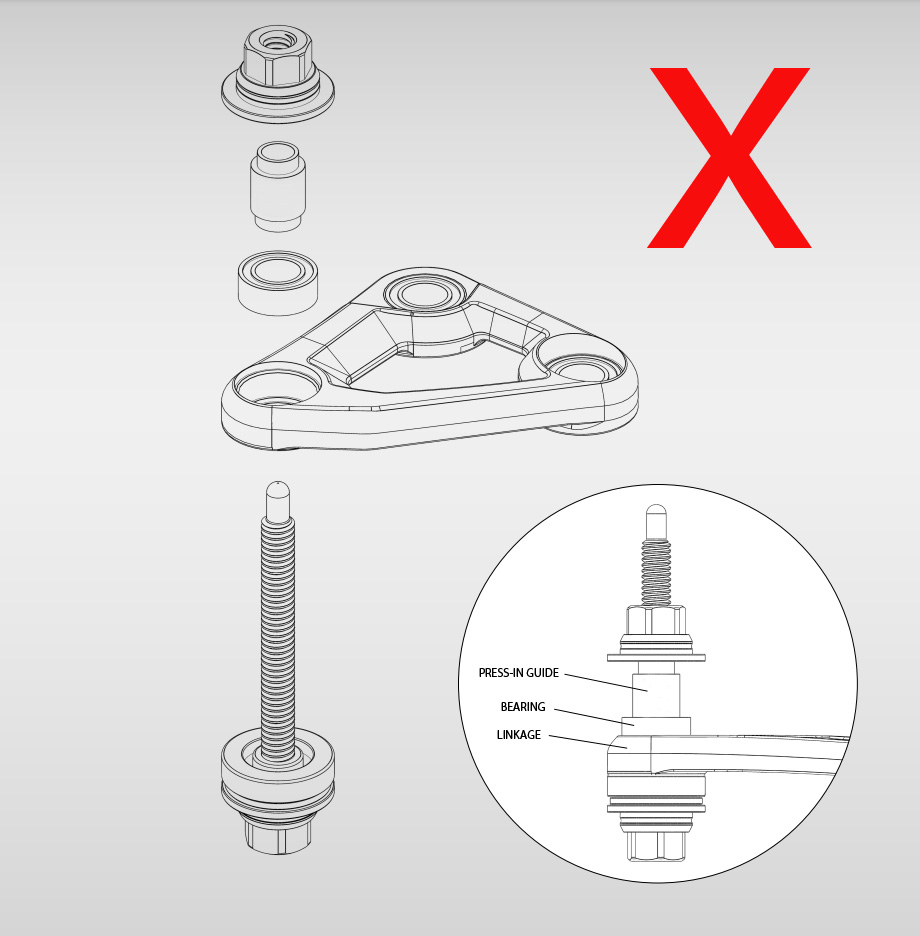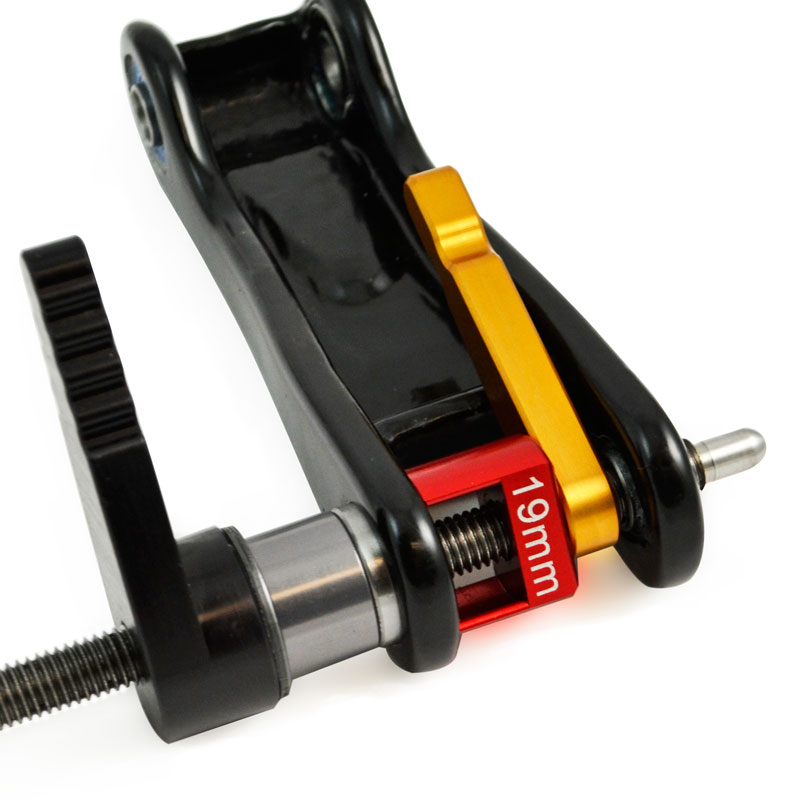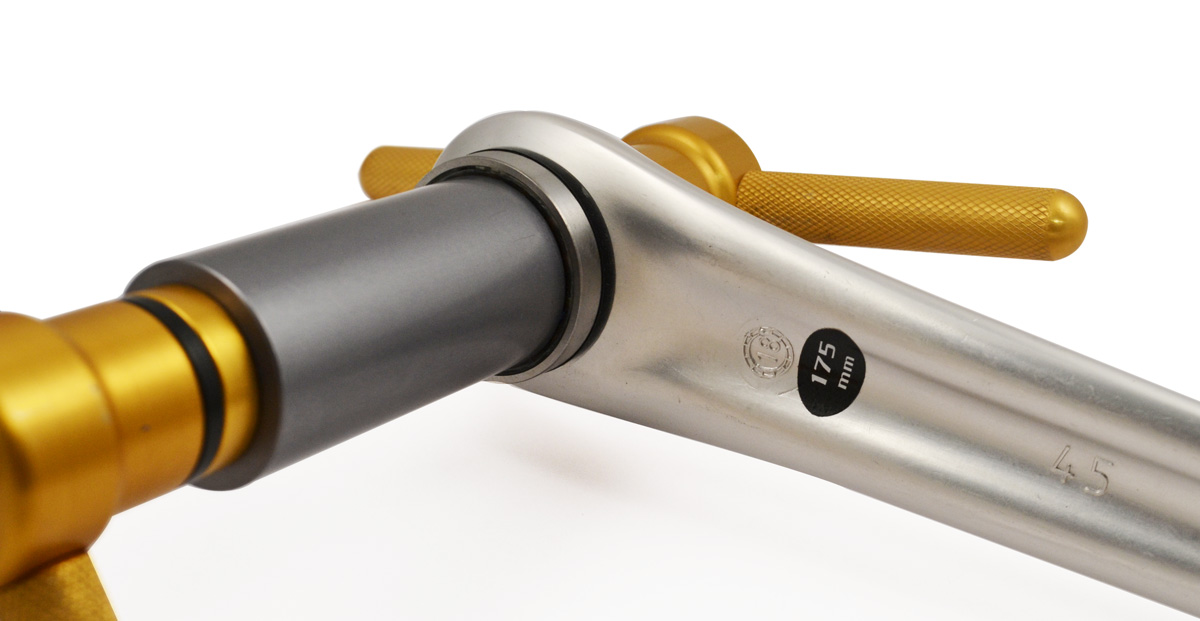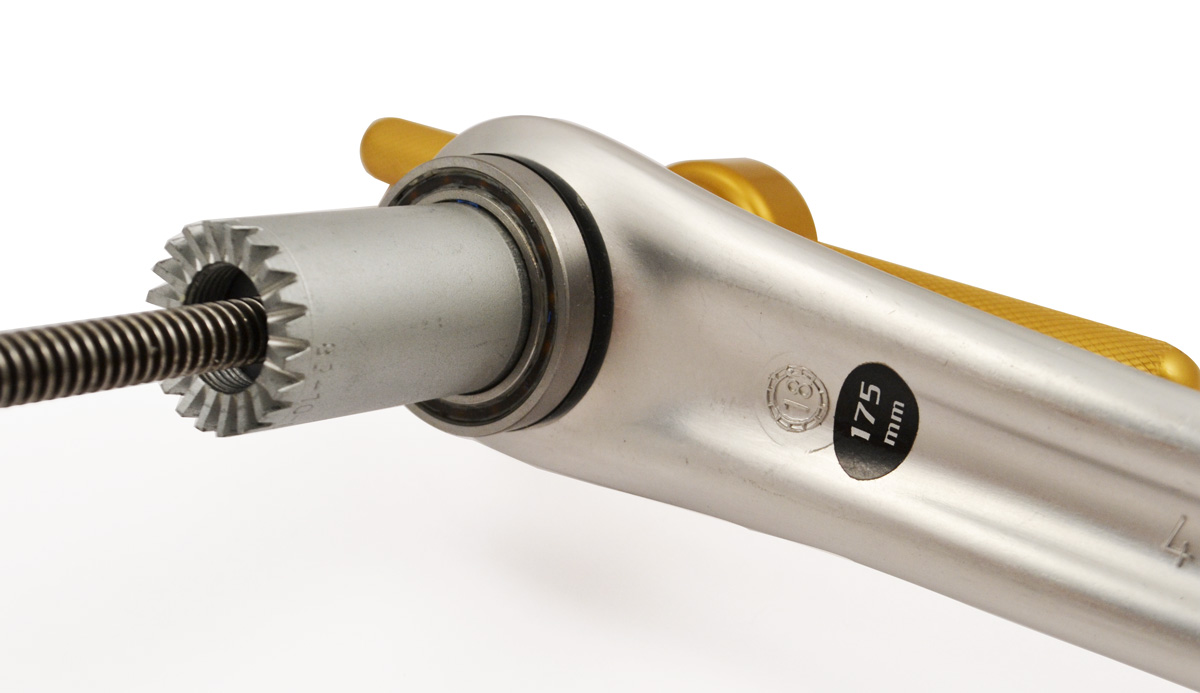Welcome to REAL WORLD CYCLING
Our SEARCH BAR is optimized to find what you need quickly. Enter the name of your bike frame, the first few numbers of a bearing, or description of any part!
BEARING INSTALLATION BASICS
12/15/2023

WHAT'S WRONG WITH THIS PICTURE?
Key principle: Pressing in a new bearing requires that the force only be applied to the bearing member supplying the press fit. Depending on the application, this could be either the inner or outer race of a cartridge bearing. If you get it wrong, the applied pressing force will go through the bearing components and could damage them.
A typical suspension pivot bearing is pressed into a socket type receptacle. In this application, the outer race of the bearing is supplying the press fit. No other part of the bearing should be loaded. In other words, the bearing press-in guide must exert force primarily on the outer race of the bearing (a piloted guide or drift may also apply force to the inner race but it cannot exceed the force simultaneously applied to the outer race).
This brings us to what is wrong with the above picture: Instead of properly applying the force to the outer race of the bearing, the press-in guide is pushing against the inner race. This causes the inner race to deflect inward, pushing against the ball bearings, which are then pressed against the outer race and used to press the cartridge into the socket. In other words, the ball bearings are being used to press the bearing. This practice often leads to bearing race damage, setting the course for premature bearing failure.
In this case, the solution is simple: Use a bearing press-in guide that spans the entire bearing and applies force to the outer race (or both races equally). As shown here, the bearing press-in guide is applying force to the outer race of the bearing, because that is where the press fit takes place:

So, for a bearing pressed into a housing, where the outer bearing race provides the press fit, the pressing load must be applied to the outer bearing race. However, note that the principle is reversed when pressing a bearing onto a shaft. An example of this would be a Campagnolo Ultra-Torque crankset, where the bearings are pressed onto the spindle, and not pressed into the bottom bracket cups (see below).

NOTICE IN THE ABOVE PIC THAT THE PRESS IS PUSHING ON THE INNER RACE OF THE BEARING

BECAUSE THE BEARING PRESS FITS TO THE SHAFT, THE INNER RACE PROVIDES THE PRESS FIT AND MUST TAKE THE PRESSING LOAD
It's worth mentioning that the above principles don't apply when removing bearings. This is because it is usually not possible to extract a bearing in the same way it was installed. Once a bearing is fully seated in a housing, the back side of the outer race is usually not accessible. Pushing the bearing out via the inner race, and transferring the force through the ball bearings to the outer race is the only option. For this reason, bearings should be serviced while in the housing. Once they have been pressed out using the inner race, they should be replaced with new bearings.
